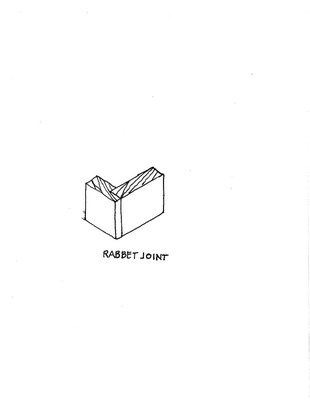

A recent discussion about the use of the term “rough sawn” lumber versus “rough sawed” made me think of quirky construction terms that sound either grammatically incorrect or just like slang. This often-confusing nomenclature, used incorrectly, can make architects and builders a little crazy—especially when their clients are quoting HGTV chapter and verse.The potato potahto tomato tomahto dialogue on job sites really is enough to make everyone involved want to say, “Let’s call the whole thing off.” One builder told me years ago that it’s best not to discuss minor issues of construction in front of clients because they’ll think the end of the world is near. He was going to “reverse” the chair rails and I nodded and said, “return” them and the client, clueless, said, “Are you really sending them back to the lumberyard?” We then explained that we were actually talking about the same thing but simply using different terms to describe how the chair rail would terminate against a casing.
The fact that the terminology used to describe some construction items can be spelled in myriad ways oftentimes adds fuel to the fire. For example, the term “summer beam” can also be called sommer, somer and sumer. Often found in a colonial-era home, a summer beam, usually placed in the center point of a space, is a massive timber spanning a large opening to support common joists. The term, from the French expression “bête de somme,” beast of burden, has been around since the 14th century, and its derivation makes sense since the member can bear a heavy load. Ironically, summer beams have absolutely nothing to do with summer.
When I first heard the term “topping out” it somehow conjured up the image of Fred Astaire in his top hat and tails. When I was a young architect, a builder client asked me if I wanted to come to his topping out party after work. When I arrived at the job site I learned that “topping out” was actually a building construction ritual traditionally held when the last beam or joist has been installed atop a structure. A tree or evergreen branch is then nailed up against the top of the roofline to celebrate the completion of this phase of the job. The party, held as a thank-you to everyone who worked on the job to date, featured a couple of 6-foot-long hero sandwiches, kegs of beers and good fun.
The cross-cultural custom of topping out has been around for centuries. The tradition’s concept of placing a branch or tree on a roof symbolized the desire to bring good luck to the building and ward off evil spirits. In Scandinavia the installation of a tree on the roof became a religious ritual to satisfy tree-dwelling spirits displaced during construction. Topping out ceremonies in timber framing spread to England, throughout Northern Europe and eventually to the United States. Geoffrey Chaucer (1343-1400), the English poet, actually referenced topping out celebrations in his written work. In medieval times the flag of the owner was often raised atop a building when the frame of the structure was completed.
In Brazil, the ceremony called Fiesta da Cemieira includes the placement of branches on the building followed by food, dance and drink. The Germans hang laurels on their chimneys and the Danish adorn the building’s roof with evergreen garlands. On skyscrapers in this country, in addition to a tree and an American flag, the last beam erected is often painted white and signed by the workers. The actual ceremony, itself, is often a public relations event.
Of course, my favorite tale involving the misunderstanding of a construction term involves the use of the word “rabbet,” which is defined as a step-shaped recess cut along the edge or in the face of a piece of wood, typically forming a match to the edge or tongue of another piece. The placement of two pieces of wood together in this interlocking fashion is referred to as a rabbet joint. When a city slicker friend came out for a weekend visit, I took her to a job site where the builder was installing the finished carpentry—moldings, casings, etc. He smiled and said he had nice little rabbets for me, and my friend asked, ”Are you really giving her bunnies?” With construction speak that sort of thing happens a lot.
Anne Surchin is an East End architect and writer currently working on a companion book to “Houses of the Hamptons 1880-1930.”
 More Posts from Anne Surchin
More Posts from Anne Surchin